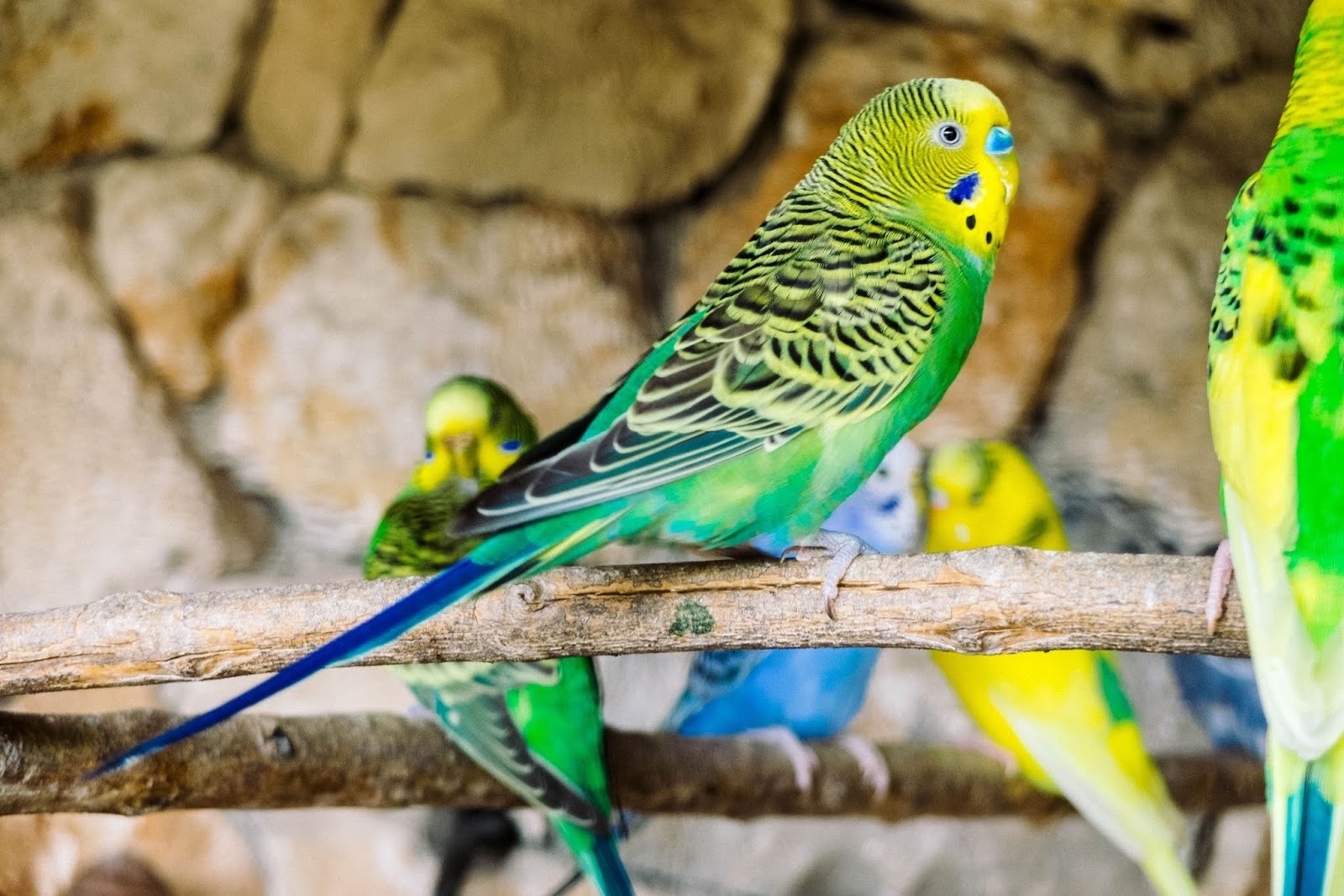
Breeding is a natural process for birds, involving egg laying and nest building. In captivity, female birds can lay eggs even without a male’s presence or fertilization. While some bird species share nest duties, others leave it to the female or rely on nature to provide the necessary warmth for the developing chicks. Pet bird species usually involve both parents in incubation, feeding, and caring for the young.
Breeding birds and raising chicks is a complex task best undertaken by experienced bird owners. Most individual pet birds do not breed successfully in captivity, and the requirements for breeding vary among species. This article provides general information, but a comprehensive guide to breeding is beyond its scope.
If you’re considering breeding your bird, it’s essential to have a thorough understanding of the process. Contacting and consulting with experienced breeders can provide insights into incubation, hatching, feeding, and determining whether your bird can care for the chicks. Inexperienced birds may struggle to care for their offspring, resulting in the owner having to hand-rear the chicks. Hand-rearing can be challenging and time-consuming, requiring a strict feeding schedule throughout the day. It also weakens the bird’s immune system, increases the risk of infection, and disrupts necessary parental bonds. This can lead to behavioral problems later in life, similar to attachment disorders seen in human babies deprived of physical contact.
Males:
Most male birds lack a penis, which can make it challenging for pet owners to determine their sex. Male birds may be identified based on feather coloration or other physical features, although many parrot species are not sexually dimorphic. During copulation, sperm is produced internally and expelled into the female bird, a process known as cloacal kissing.
Females:
In female birds, usually only the left ovary is present. The ovary produces unshelled eggs, which may be fertilized by deposited sperm. The fertilized egg then passes through the female, where it receives additional layers of shell material and egg white fluid before being expelled through the cloaca and deposited in the nest.
Female birds are receptive to male attention during specific times of the year and under certain conditions, such as the presence of suitable nest boxes. Breeding cycles for each bird species can vary, so it’s important to consult with your veterinarian. Additionally, female birds may be selective about their mates, requiring exposure to different males before successful mating occurs. Factors like age, environment, light cycle, nest box availability, food availability, socialization, the presence of other birds, and the presence of potential predators can all influence whether birds will mate.
The time between mating, egg laying, and the length of incubation also varies between species. Accurate estimates for your bird can be obtained from an avian veterinarian.
Caring for Newborns and Young Birds:
Breeding and rearing birds successfully is a challenging task that not all bird owners will undertake. This section provides general information but does not serve as a comprehensive guide to rearing young birds.
Most pet bird species are born blind and featherless. Depending on the species, their eyes will open within 1 to 2 weeks, and feathering will be complete within 1 to 5 months.
Proper care during breeding, maintaining good sanitation and nutrition, managing the nursery, and providing appropriate egg incubation (if necessary) can help reduce disease risks for newborn chicks. Keep their cage in a warm spot away from drafts. While the chicks should not be disturbed, monitor them closely to ensure proper care from the parents. If the newborns appear to be struggling or not thriving, contact your avian veterinarian immediately for guidance on hand-rearing.
Swallowing Foreign Objects:
As chicks grow older, it’s commonfor them to explore their surroundings and sometimes ingest non-food items found in their cages. Loose bedding is often a favorite for curious chicks. This behavior can stem from normal curiosity, boredom, or an excessive appetite. However, it can result in foreign objects getting stuck in the chick’s crop. In some cases, a veterinarian may be able to manually manipulate the item back up the esophagus for retrieval. However, certain objects like jewelry screws or glass may require surgical intervention.
Crop Burns:
Crop burns occur when birds consume food that is too hot, commonly observed in hand-fed baby birds. This can happen when powdered formula is mixed with water heated in a microwave bowl. Even if the temperature seems acceptable, the formula continues to warm as it absorbs heat from the bowl. The severity of the burn and the bird’s reaction can vary significantly. Some birds may become ill due to tissue damage and may require intensive care, while others may show no signs until a hole or food leakage is noticed in the crop area. Treatment depends on the extent of tissue damage, ranging from antibiotics and topical ointments for mild burns to life-saving supportive care and potentially surgery for severe burns.
Fatty Liver Disease:
Fatty liver disease is caused by a high-fat diet and is commonly seen in hand-reared chicks, particularly cockatoo chicks. Owners may unknowingly introduce high-fat foods like peanut butter or oil into their regular commercial formula, or feed high-fat formulas designed for macaws to inappropriate species. Fat accumulates in the liver, interfering with normal liver function. Chicks with fatty liver disease are often heavy for their age and experience severe breathing difficulties. Treatment involves removing sources of excess fat, reducing the amount of food provided in each feeding, and adding digestive aids like lactulose to the formula. Handling the birds gently and minimizing stress is essential. If the disease is not detected early and breathing difficulties occur, immediate veterinary care, including oxygen administration, injectable fluids, antibiotics, and supportive care, may be necessary to save the chick.
Birth Defects and Developmental Problems:
Young cockatiels may exhibit low body weight for their age and appear stunted shortly after being purchased. These birds may have underlying congenital or developmental issues, such as decreased liver function and compromised immune system competence. While some of these birds may survive with supportive care, many will not. Surviving birds may lead fairly normal lives or require ongoing veterinary attention.
Another issue observed in young cockatiels is known as the “one week post-purchase syndrome.” These birds are typically partially weaned and sold soon after arriving at pet stores. In the wild, they would be partially self-sufficient but still receiving parental supplementation. When these birds are sold as “weaned” to unsuspecting owners, it takes about a week for reduced food intake to cause noticeable weakness. At this point, the chicks become emaciated and dehydrated, and their response to medical treatment may vary.
Splay Leg:
Splay leg occurs when one or both legs of a chick are bent, making it difficult for them to stand correctly. The exact cause of this abnormality is unknown, but it can occur in various pet bird species, particularly in cockatiels. Factors like excessive nesting, slick nest box flooring, birth defects, and nutritional deficiencies in the parents or the young bird can contribute to splay leg. Keeping each baby in a container that prevents leg sliding and providing flooring with traction can be helpful for young birds with splay leg. In cases where the legs are already splayed, a veterinarian can often correct the issue with splints, hobbles, or traction. The earlier the correction is attempted, the faster the recovery and higher the success rate.
Underbite:
An underbite is a genetic abnormality where the lower jaw outgrows theupper jaw. It is commonly seen in chicks from the same clutch of eggs. If the underbite is not severe and detected early, manual manipulation of the bird’s jaw may avoid the need for surgery. However, experienced veterinarians can perform successful surgical correction in advanced cases.
Constricted Toe Syndrome:
Constricted toe syndrome is a fairly common condition in infant birds, often affecting more than one toe. It occurs when fibrous tissue forms at the joint of the toe, obstructing normal blood circulation. This leads to swelling, loss of blood supply, and eventual necrosis of the toe’s end. In severe cases, amputation may be necessary. When identified early, surgical removal of the fibrous band can restore circulation. The cause of constricted toe syndrome remains unknown.
Eyelid Atresia:
Some birds are born with a condition called eyelid atresia, where the eyelids are absent, and the skin around the eyes is fused together. This condition is most common in cockatiels. Veterinary intervention is necessary to address this issue, and surgery is typically required to separate the fused skin and create functional eyelids.
This article provides an overview of breeding birds, caring for newborns, and common issues that can arise. It is important to consult with an avian veterinarian for species-specific guidance and to ensure the well-being of both the breeding birds and their offspring.
Author Profile

- Hello, I'm an American writer named Isabella. I love writing about birds and pets, and I have a deep passion for beautiful birds. I am currently studying veterinary medicine, and I am 21 years old, hailing from Texas.
Latest entries
 lutino alexandrineMarch 5, 2024The Lutino Cockatiel: A Yellow Gem in the Avian World
lutino alexandrineMarch 5, 2024The Lutino Cockatiel: A Yellow Gem in the Avian World UncategorizedDecember 28, 2023How to know the age of a parrot
UncategorizedDecember 28, 2023How to know the age of a parrot UncategorizedOctober 30, 2023The Parrot Gender Paradox: What You Need to Know Before Choosing a Bird
UncategorizedOctober 30, 2023The Parrot Gender Paradox: What You Need to Know Before Choosing a Bird UncategorizedOctober 30, 2023The problems that parrots face in captivity
UncategorizedOctober 30, 2023The problems that parrots face in captivity





